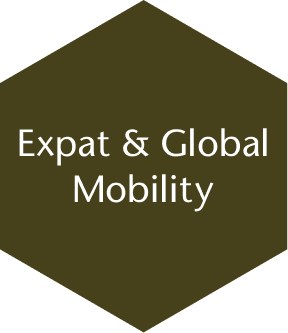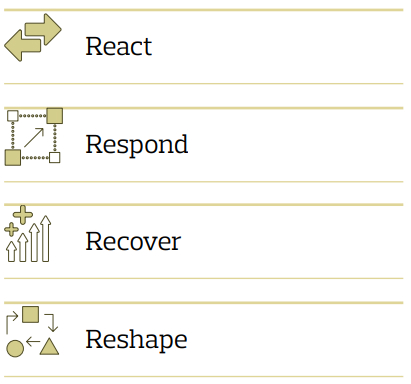Every business is feeling the impact of COVID-19. This unprecedented global pandemic is disrupting supply chains, consumer spending, business productivity, employee wellbeing — and the foundations of the way we work. Most global financial markets have experienced their worst quarter since 2008.
From a Human Capital perspective, quite rightly, the immediate focus has been on supporting employees and looking out for their safety and wellbeing. It is critically important that company policies are up-to-date and reflect the latest legislation in each geography – which can evolve from one day to the next.
Our clients are understandably concerned and have been reaching out with questions. Here is a flavour of typical discussions:

- Can benefits be continued when employees are temporarily laid off?
- Does medical insurance cover COVID-19?
- What countries are not covered?

- How can you minimise panic behaviour by pension plan members and trustees?
- Are there opportunities for deferring cash funding or cost savings?

- How do you ensure that you provide support for your employees globally?
- How do you ensure that your your expat population understands the impact of COVID-19 procedures in their location?

- How do you ensure that employees are healthy during quarantine?
- Physical
- Social
- Financial
- Emotional
In order to formulate a comprehensive Human Capital response, we would suggest the following framework, split into four key steps:

With this briefing we will summarise the most important developments and actions for employers as they look to mitigate the impacts of the crisis and look to the future.
React
Protecting Employees
For most companies, it has already been necessary to transition their employees to flexible working patterns or working from home. More than 75% of participants in Aon’s survey* have now enforced mandatory working from home policies for their head office and corporate staff. Clearly, such a transition is not possible for all workers, and employer responses have been varying significantly by country and industry. Governments have been issuing legislative updates and, in some cases, mandating which businesses must remain open.
Employers should be sensitive to the fact that this may represent a new way of working for many of their staff, so it is important to offer support for working from home, as well as wider employee wellbeing. In industries where working from home is possible, many are finding that more frequent catch-ups and use of video conferencing can help keep up productivity, morale and preserve mental health. Regular leadership video messages and updates may also be effective as means of maintaining a personable connection with the employees.
Around 50% of companies responding to our survey were expecting restrictions to be lifted before end of Q3 2020. However, the way that we do work may change significantly, even after the global lockdown restrictions are eased.
From the perspective of managing global benefits, the first step should be to check that existing programmes and HR policies are ‘fit for purpose’ – that is to say, they continue to be relevant, fully reflect corporate views and that there are no unexpected lapses in coverage. Globally, more than 97% of companies have already been providing regular updates to employees on key business issues and corporate policy changes, with around 80% adjusting or augmenting family care benefits.
Although this varies significantly by sector, we are already seeing some modification to incentives (e.g. guaranteed pay levels regardless of actual retail store performances), providing additional cash allowances to workers, or facilitating working from home.
We have prepared a high level summary that can be used to examine early impacts.
In line with this trend, we also recommend that priority should be given to reviewing leave policies and medical coverage to anticipate issues, and putting in place solutions to cover critical gaps. It is essential that business continuity plans and relevant insurance policies are kept up-to-date.
Existing products, such as tele-medicine or virtual doctor appointments, may now be particularly popular as means of obtaining non-urgent medical care. Employee Assistance Programmes (“EAP”) are becoming more widely utilized. We also see the Health & Benefits (“H&B”) market already addressing pandemic risks by offering new products, which offer cash allowances and other family support benefits in case of hospitalization.
However, as well as potentially implementing new solutions, now may be a good time to remind employees of services that they might already have access to.
* Global COVID-19 Pulse Survey (2,030 participants), Aon, 2020
Respond
Employee Communications
Organizations should consider increasing their focus on supporting the wellbeing of their employees via practical, easy-to-understand communications. We would recommend checking your communication strategy against the framework below:
- State the facts. Connect employees to timely, accurate information from relevant health bodies, legislative updates and describe the impact on your organization.
- Clearly articulate and communicate preventive actions the organization is taking to avert or contain transmission of COVID-19 at work. Focus on technology and employee safety, hygiene, as well as wellness support.
- Summarize Human Capital company policies. For example, describe health plan coverage (preventive and treatment), attendance, paid time off, payroll continuation, travel, and group meetings.
- Promote safety steps that employees can take at work. Provide clear instructions about what to do if employees suspect they have been exposed to COVID-19.
- Give special consideration to employees’ mental health and changing expectations. This may be particularly important when supporting older employee populations and those who may be less financially secure.
- Employees may need reassurance around their interactions with Health & Benefits providers. These may be running reduced response centres, or suffering from staffing shortages, so may take longer to respond.
A more formal Communication plan is also available here.
Recover
Protecting The Employers
The rapidly-evolving nature of the crisis highlights the importance of having a robust internal risk management infrastructure. As a priority, companies need to make sure there is a regular internal process for keeping up with developments and efficiently implementing company-wide responses. Aon’s Response Planning Framework suggests a recommended approach, which could be adapted to each organization’s needs.
As employers begin assessing the impact of COVID-19 and planning for the future, the effects on hiring plans are already apparent. In Europe, 60% of firms report a more cautious hiring outlook, and 20% of firms see a potential for downsizing their workforce. There has been a similar percentage response in North America, with 59% of firms reporting a more cautious hiring outlook, and 17% of firms see a potential for downsizing their workforces. Around a quarter of companies worldwide are reporting implementing a hiring freeze.
There are a number of strategies that employers could utilize, in order to protect themselves. These examples focus on preserving the cashflow:
- Hiring freezes could potentially be also applied to any ‘in-flight’ hires, according to business needs;
- Freeze or postpone non-statutory salary adjustments or merit increases. Already reflected by 17% in Europe and 14% in North America;
- Reduction of bonuses. This is already being implemented by around 5% globally;
- Cutting salaries of senior staff, including at C-Suite level. This is already seen in some hard-hit industry e.g. airlines;
- Voluntary layoff plans that allow eligible employees to exit the company on a salary and benefits package. Such an approach may reduce the need for other, involuntary workforce actions.
- As noted earlier, many employers are already adjusting leave policies to provide pay to staff recovering from COVID-19. Additional consideration should be given to the impact of employees delaying or cancelling leave during lockdowns. Companies may choose to force employees to take leave in preference to building up large unused leave accruals;
- Reducing Defined Contribution (“DC”) employer contributions to locallymandated minimums, or delaying pension (DB or DC) contributions to end of year, where this is permitted by legislation or plan rules;
- Consider impacts on benefit plans, for example Defined Benefit P&L costs, or any additional cash contributions that may be triggered by changes in funded statuses;
- Consider available risk-reduction measures to improve the balance sheet. Due to the current spread in UK corporate/government bonds, depending on the scheme’s asset strategy, now may be a good time to de-risk UK defined benefit (“DB”) liabilities with less company cash required to complete the transaction;
- Restructure M&A deals to reduce additional post completion cash outflows, such as additional pension funding.
Given the range of potential options and impacts, it is important to have a centralized and coordinated approach that can be implemented locally, while being mindful of country-specific constrains and new country legislative measures.
Aon will be conducting further regular surveys, that can help keep employers stay up-to-date with trends and latest actions.
Reshape
Covid-19 Impact On M&A and Portfolio Companies
The world of M&A is currently facing serious disruption due to the COVID-19 crisis, as dealmakers struggle to adjust to new ways of working. The lockdown of major financial centres, New York City in particular, is presenting both logistical and risk assessment challenges.
Ongoing transactions are impacted by new considerations, as buyers work hard to evaluate new risks. Furthermore, there is likely to be long-term impact to M&A processes and considerations.
Whilst many companies have previously had some form of pre-planned pandemic response, we would expect significantly increased focus on this issue, even after the ‘dust settles’. Portfolio managers may well find themselves reviewing pandemic response and catastrophic insurance limits regularly, as part of their regular risk review cycle.
Special Focus – Buy-side Due Diligence and Global Pandemics
Given current developments, extra consideration must be given to any ongoing Due Diligence processes. In addition to the standard analysis, we would recommend prospective buyers to also consider global pandemic concerns, such as:
- Review Health and Welfare benefits, as well as HR and Safety policies, to ensure they are ‘fit for purpose’ in relation to the pandemic(s). Specific examples are policies covering home- or flexible-working and sick leave. Given that Health and Safety policies will count towards the company’s overall sustainability / ESG rating, particular attention should be given to them;
- Review workforce profile and ensure the impact of any furloughed employees is understood in relation to existing employee benefit plans (e.g. risk programme coverage, accrual of defined benefit promises etc);
- Any current spend on contractors should be carefully assessed;
- Review of any changes to salary structures and working patterns, as result of the pandemic response. Analyze the new ways of working to understand impact on workforce and employment costs;
- With many employees postponing or cancelling their annual leave during the lockdown, the accrued leave policy should be carefully assessed. This may have a significant impact on financials, employee behaviour and other HR policies;
- Assess whether the deal can be structured so that the cash outflow post-close is minimized for example by pre-agreeing pension funding with trustees pre-close or by use of a Transaction Liability solution.
Considerations for Portfolio Companies
The impact of COVID-19 may be even more pronounced for Private Equity (“PE”) firms. As debt financing becomes more difficult to secure, financing new acquisitions may become more challenging. The flip-side of it is that seller valuations of targets may reduce accordingly - buyers may find some ‘bargains’, providing the target’s risk profile can adequately fit their risk appetites.
In the short-term, many PE’s may choose to focus on their existing portfolios and try to obtain maximum value from existing assets. Whilst every company’s situation is unique, all are facing similar challenges. As a starting point, HR and Risk Managers may wish to consider the following questions:
- Do existing Health & Benefits (“H&B”) policies cover pandemics? What is included or excluded, what needs to be self-insured? Is there specific policy wording relating to pandemics?
- Does Business travel insurance cover pandemics, and specifically, employees stranded abroad?
- Do H&B policies for expats cover pandemic situations? What is the extent of their medical coverage?
- Does the existing broker have capacity to quickly respond to urgent requests / modifications to cover?
- How mobile / resilient is the workforce? Can they continue working in the current environment?
- Have business continuity programmes been reviewed, and does the company have a robust risk management structure?
- How easy would it be to change salary structure going forward, for example by varying proportion of base pay against variable, or other incentives?
- What is the state of company’s financial wellness – can they support employers through current situation? This could take the form of salary advances, allowances to buy equipment to enable working remotely, etc.
Portfolio Company – Workforce Redeployment
A solution that is perhaps unique to portfolio companies is the potential ability to redeploy employees between businesses. Receiving companies, who may be experience sudden demand for extra manpower (particularly in industries such as in healthcare, retail and logistics) would identify the type skills required, and resource from companies with under-utilized resources (such as an airlines).
Such transfers would need to consider issues such as local employment terms and conditions, benefits and insurance.
Reshape
Achieving Long-term Resilience
Whilst it is too early to make predictions regarding long-term post-crisis impacts, there may be fundamental differences in employee priorities and expectations, once the lockdown restrictions are eased.
Identifying trends early and adapting approaches will be critical to effective workforce management, as well as retention of key staff. We would recommend preparing for these discussions by considering the broad framework of Human Capital:
- The move to more flexible working patterns may coincide with greater demand for flexible benefit offerings. This may be a good time to revisit the overall benefits package and highlight the advantages of your company’s benefit plans;
- Use lessons learnt to adapt workplace culture / long-term organizational changes, for example by offering more flexible working arrangements to employees;
- Consider changes to compensation structure according to business need – for example, by changing the proportion of incentive vs base pay;
- Assess viability and design of existing Employee Benefit arrangements. Conduct benefit audits and consider impacts on governance, funding, risk profiles, and identify cost saving opportunities;
- Consider solutions such as Phased Retirement, for example by using existing pension accruals to incentivise eligible employees to go into part-time period.
Long-term benefits programmes, such as funded DB pensions, will be inevitably affected by short-term market volatility, but early signs are that regulators and governments are looking to avoid knee-jerk reactions.
We would encourage close monitoring of such programmes in respective markets, but we remain hopeful that adequate support will be provided to employers to enable survival of such programmes.
It is important to note that, as well as new trends emerging, any ongoing workforce changes may also be rapidly accelerated:
- A significant percentage of people never return to the office, but prefer to stay working from home;
- More flexible working hours might also see more ‘stay at home’ parents re-joining the workforce;
- Fewer people may want to work for small firms or start-ups, who may be less able to support them through any future pandemic cycles;
- Financial wellness and job security may become a key part of the total reward package;
- The concept of the ‘Employee Brand’ may need to be completely revisited, with focus on positive communications around wellness and benefits
While predicting the future is a redundant exercise, the following article provides useful insights into the Future of Work.
Now, more than ever, building employee value is vital. Understanding Human Capital risks, empowering workforce agility and strengthening company resilience are all tangible areas, where successful outcomes can be achieved.